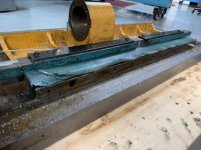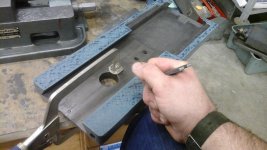vegard
Aluminum
- Joined
- Jan 28, 2006
- Location
- San Diego, CA
Hi,
I recently picked up a Kitamura MyCenter 2, and it is mostly a sweet running machine. I have been going through it, and replaced all the air lines and solenoids, and I am working my way through the lube system, replacing the meter units and lines.
I took the table off to access some of the lube lines, and found the turcite is lifting.
I got one quote for having someone replace it so far and it is pretty high. What should something like this cost?
Just looking at the surfaces in question I would think I could ship the table to someone and they could do it in their shop, possibly even just surface grinding the turcite rather than scraping it.
What do you guys think? And can anyone recommend someone to do the job? I am in Southern California (San Diego)
Thank you
Vegard


I recently picked up a Kitamura MyCenter 2, and it is mostly a sweet running machine. I have been going through it, and replaced all the air lines and solenoids, and I am working my way through the lube system, replacing the meter units and lines.
I took the table off to access some of the lube lines, and found the turcite is lifting.
I got one quote for having someone replace it so far and it is pretty high. What should something like this cost?
Just looking at the surfaces in question I would think I could ship the table to someone and they could do it in their shop, possibly even just surface grinding the turcite rather than scraping it.
What do you guys think? And can anyone recommend someone to do the job? I am in Southern California (San Diego)
Thank you
Vegard





